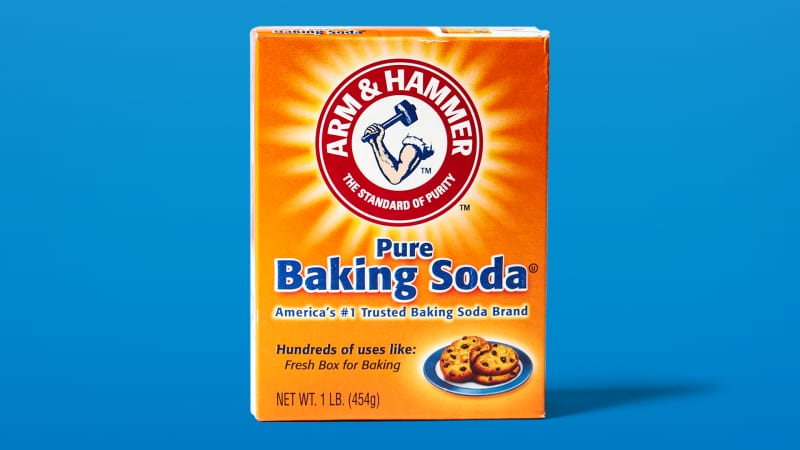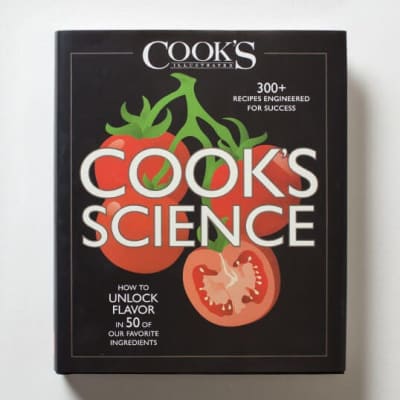I fell in love with sodium bicarbonate the first time I watched a science-fair volcano erupt. But it wasn’t until decades later and years with the Cook’s Illustrated team that I understood how truly powerful of an ingredient it is.
Why Baking Soda Is the Most Useful Ingredient in Your Kitchen
Published Feb. 10, 2023.

You might not think twice about your humble box of baking soda—but it’s a real kitchen workhorse. It’s crucial in baking, of course, but it can do so much more than leaven.
To learn more about the four ways baking soda can improve your cooking, read on. Or, check out the latest episode of What’s Eating Dan?
Sign up for the Cook's Insider newsletter
The latest recipes, tips, and tricks, plus behind-the-scenes stories from the Cook's Illustrated team.
1. It Adds Loft
When baking soda reacts with an acid, we get an important product—carbon dioxide. That gas gets trapped within a batter or dough and expands when heat is applied to provide lift and rise.
Baking soda is a classic leavener for cakes and quick breads, such as banana bread. It works best in recipes that contain a natural source of acidity—think sour cream, buttermilk, or lemon juice.
Recipes that don’t contain one of these naturally acidic ingredients will usually call for baking powder, which is a complete leavening system containing both baking soda and one or more acids. But even if a recipe calls for baking powder, it will often still call for baking soda. And that is because baking soda does more than just leaven.
2. It Encourages Browning
Browning is the result of Maillard reactions. That’s when sugars and the amino acids that make up protein come together in the presence of heat to form hundreds of new flavor compounds. And those reactions increase with increasing pH. So, while baking powder can do the leavening work, it takes baking soda to make a baked good properly basic for great browning.
TRY IT YOURSELF
If your quick breads or muffins turn out paler than you want after the proper cook time, try adding ¼ to ½ teaspoon extra baking soda for the next batch.
3. It Tenderizes Meat
Baking soda’s next little trick has nothing to do with browning or even baking for that matter. It’s all about tenderization.
Treating small pieces of meat with a baking soda solution before cooking is a technique seen quite often in Chinese cooking, especially in stir-fries. If your favorite Chinese restaurant always serves incredibly supple and tender beef in their dishes, baking soda is likely involved.
Briefly soaking meat in a solution of baking soda and water raises the pH on the meat’s surface. This alters the charge on the muscle filaments so that they repel each other and remain a tiny, tender distance apart during cooking, instead of collapsing together and squeezing out moisture. The reaction is largely limited to the surface, so thinly sliced meat and ground meat work best here.
Adding baking soda to ground meat can absolutely transform it. Not only does the soda make the protein more tender, it also helps it hold on to more moisture. That, plus the higher pH, means you can actually brown ground meat without it just flooding the pan with juices. We’ve used this trick on ground beef for chili and sloppy joes, and it’s a game changer.
TRY IT YOURSELF
Into a pound of ground meat, incorporate ¼ to ½ teaspoon baking soda stirred into 1 tablespoon water. Let it sit for 5 minutes, then proceed with your recipe.
Cook's Science
Understanding how ingredients work—at the molecular level as well as at the stovetop—allows you to amplify flavor and perfect their structure when you cook. These intriguing test kitchen experiments tell you what’s really happening when you cook.4. It Speeds Up Cooking
Even if baking soda could only improve browning and tenderize meat, it would still be one of the most useful ingredients in your pantry. But, we aren’t done yet—because baking soda can also save you time.
Unassuming as it may be, baking soda is nothing short of a powerhouse when it comes to quickly softening numerous types of vegetables, beans, and grains. Adding just a pinch to the food as it cooks creates an alkaline environment that weakens the cell walls of the ingredients so that they break down and soften more quickly.
For polenta to lose its hard, gritty texture and turn creamy, enough water must penetrate the corn’s cell walls so that the starch granules within swell and burst (or “gelatinize”). When a pinch of baking soda is added at the start of cooking, the pectin in the cell walls of the corn quickly breaks down, weakening its structure and allowing water to enter and gelatinize the starch in less than half the time.
When baking soda is added to the cooking liquid for green beans, their pectin rapidly disintegrates, turning the legumes silky soft in minutes.
And adding a ½ teaspoon of baking soda to simmering carrots or broccoli for pureed soups helps the vegetables break down quickly and create restaurant-level creaminess.
TRY IT YOURSELF
Incorporate a smidge of baking soda into onions or shallots while you sauté or caramelize them—they will rapidly soften, nearly to the point of melting.
Want to learn more about baking soda’s unique powers? Watch the latest episode of What’s Eating Dan? below.

